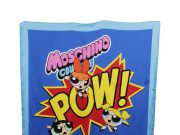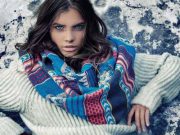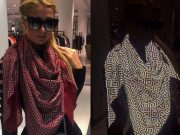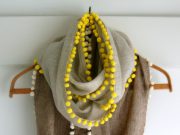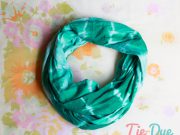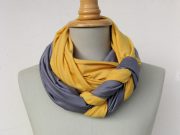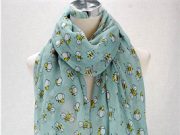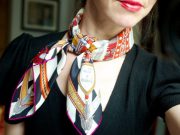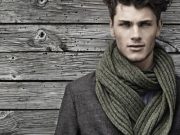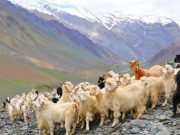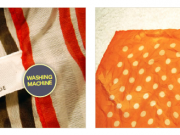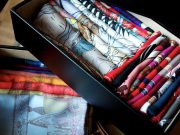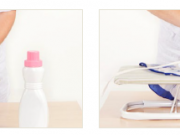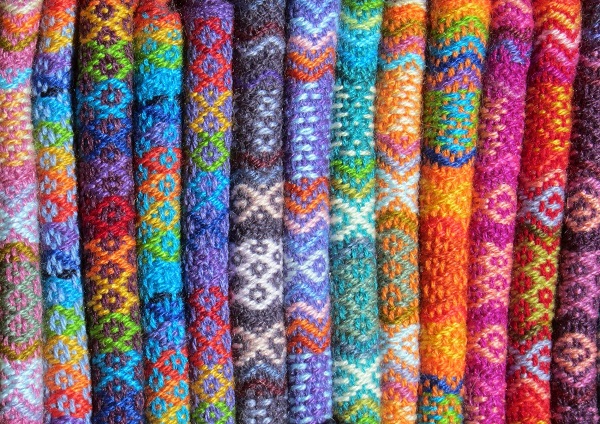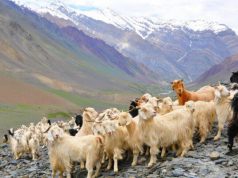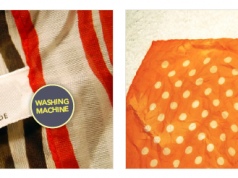A scarf is one of those things that a lot of the time, you really don’t think about in too much detail. Ideally, you want to get up, get dressed, throw on your favorite scarf and go. Whether you are wearing it to keep warm, to add a pop of color to your wardrobe, or to fashionably hold your hair out of your eyes, your favorite scarves are likely as functional as they are fashionable. But that is not to say that they are interchangeable. Each and every one of your scarves had its destiny already determined for it long before it came to live in your wardrobe; a destiny determined by a manufacturer’s fabric choice.
To determine which sort of life your favorite scarves are destined for, it is imperative to understand the effect different types of materials have on the way a scarf looks, drapes, and feels against the skin. Generally speaking, it is easiest to think of your wardrobe of scarves in one of three particular categories; farll and winter scarves, spring and summer scarves, and accent scarves.
Fall and Winter Scarves
A woolly winter scarf is not only a fantastic cold-weather fashion accessory, it is also a pragmatic way to add an extra layer or plug the gaps in your jacket to keep out the cold. Here are some of the most common natural fabrications you will see in a woolly winter scarf.
Wool
As the name might indicate, woolly winter scarves are commonly made of wool. I know, genius, right? But the word wool is a general term, which simply refers to the fleece of an animal that has been harvested and spun to make yarn or yardage of material. Wool is warm, it breathes, and if cared for properly, looks fabulous. Some of the most popular types of wool you will see in your woolly winter scarves include:
Lambswool
It’s just as it sound; the fleece of a lamb or sheep has been shorn and spun into a yarn. This is the type of wool that famously hails from Scotland. lambswool tends to be warm, durable, and just a wee bit scratchy. lambswool tends to be less expensive than other types of wool.
Merino
Merino wool comes from the Merino sheep of Italy. The merino fleece is softer than that of the Scottish sheep, and therefore the resultant wool is softer. Merino is durable, slightly more costly than lambswool, and can be used to make lighter, summer-weight fabrics.
Cashmere
The Rolls Royce of wools, cashmere comes from the fleece of the cashmere goat. Soft and silky, it feels marvelous against the skin, is durable (although somewhat less so than lambswool or merino), and gets softer with age. Cashmere is one of the most expensive types of wool on the market.
Pashmina
Pashmina refers to a type of cashmere that is made from the fleece of the Pashmina goat. Pashmina wraps enjoyed a surge of popularity in the 90s. Made from the wool from the underbelly of the Himalayan goat, 100% Pashmina is actually very coarse on its own, and most manufacturers blend the wool with a bit of silk or cashmere to get the silky feel that most people associate with a Pashmina. These days, the term Pashmina more often refers to the actual wrap style of the scarf, as opposed to the materials used to make it.
Alpaca
Alpaca wool is made from the fleece of the South American Alpaca, a camel-like animal with a lustrous and silky coat. Alpaca is one of the warmest wools available on the market, and it is used quite frequently in knitting for babies and children. Alpaca wool can be more expensive than other types of wool.
Mohair
That super-fuzzy, sheer, loosely-knit, yarn that you might recognize is most likely mohair. Mohair is warm, although by itself very scratchy, and therefore if you are wearing it against your skin, you may wish to blend it with another material. Mohair filters light through it, giving it an almost angelic appearance in the right lighting.
Spring and Summer Scarves
Cool summer scarves are generally made from lighter, breathable materials, and work as accent pieces, beach sarongs, or an impromptu sun shield or airline blanket. The most common materials found in your summer scarves include:
Cotton
We hardly need to explain the merits of cotton, as it is one of the most popular natural fabrics on the market today. Cotton is cool, breathable, easy to wash, and durable. What’s not to like?
Linen
Made from the fibers of the flax plant, linen is considered the most breathable of the breathable fabrics. Known for its often rumpled, textured appearance, it is a perfect fabric for the beachy, dressed-down looks of summer.
Jersey
Often referred to simply as t-shirt fabric, jersey is a cotton-based fabric that is the perfect fabric to embellish with sequins and embroidery, or sew into non-traditional configurations like the infinity scarf or cowl. Jersey has a bit of stretch, launders well, and is extremely comfortable.
Accent Scarves
Silky accent scarves encompass your pocket squares, head and neck scarves, or even just the scarf you always tie around the handles of your favorite handbag. A classic Chanel or Hermes scarf is a perfect example of a silky accent scarf, and is a fast and easy way to elevate the sophistication level of a look. These scarves are generally found in two main fabrications:
Silk
Silk is a natural fiber spun from the cocoons of the mulberry silkworm. It can be either shiny (called satin) or matte, is breathable, and exquisitely light to the touch. Some varieties of silk are washable, while others must be dry cleaned.
Polyester
Polyester can look and feel a lot like silk (and is also called satin when it is shiny), but does not offer the same amount breathability. Polyester scarves are very durable, can be easily laundered, and depending on the manufacturer, can look every bit as luxe as their silk brethren.


